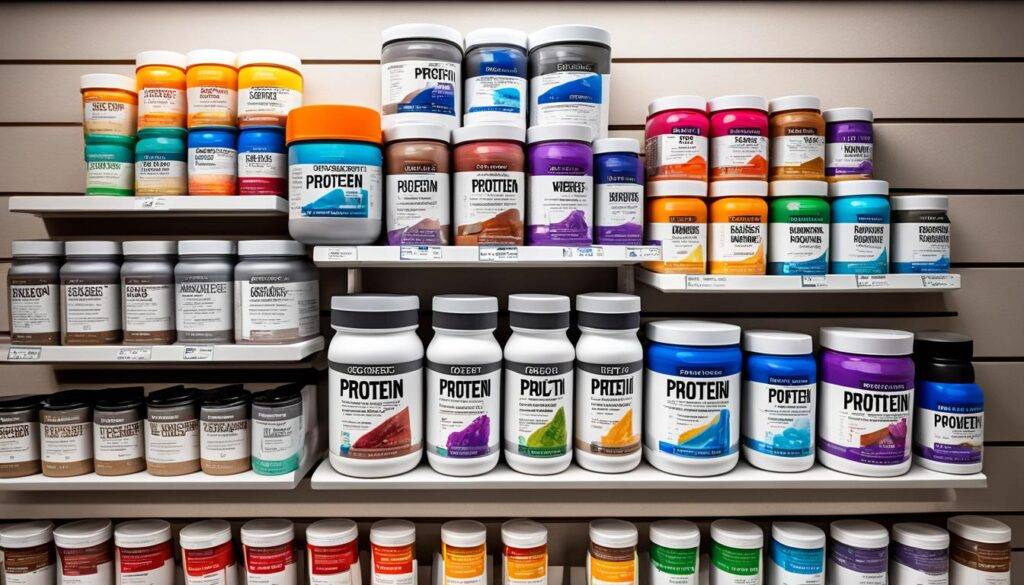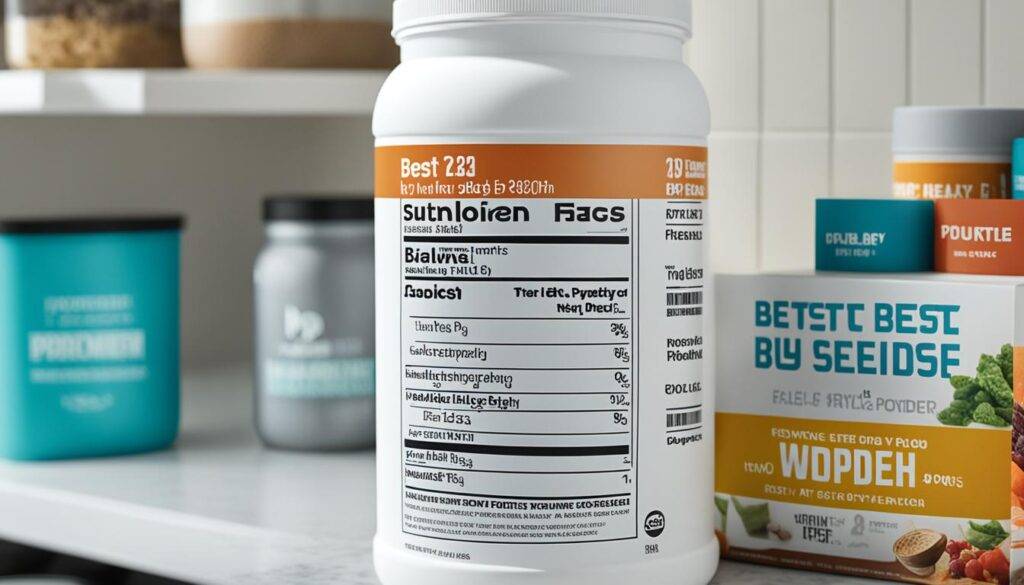As a fitness enthusiast and health-conscious individual, I’ve often found myself wondering: does protein powder expire? If you’ve ever stared at a tub of protein powder in your pantry, questioning its safety and effectiveness, you’re not alone. This comprehensive guide will dive deep into the world of protein powder expiration, uncovering everything you need to know to keep your supplements fresh, effective, and safe for consumption.

Understanding Protein Powder Shelf Life
So, does protein powder expire? The short answer is yes, but it’s not as straightforward as you might think. Most protein powders come with a “best by” date of about two years from the date of manufacture. However, this timeline can vary based on several factors:
- Protein Type: Different protein sources have varying shelf lives. For instance, whey protein, one of the most popular choices, typically lasts 9-19 months when stored properly.
- Storage Conditions: Temperature and humidity play crucial roles in determining how long your protein powder remains fresh. For example, whey protein can last up to 18 months at room temperature but only 9 months in warmer conditions.
- Additives: Many protein powders contain ingredients like maltodextrin and lecithin, which can extend shelf life to around two years.
- Packaging: The type of container and its seal quality can significantly impact how well the protein powder maintains its freshness.
Protein Sources: Not All Powders Are Created Equal
Your choice of protein powder affects not only its nutritional profile but also its shelf life. Let’s break down the most common types:
- Whey Protein:
- Shelf life: 9-19 months
- Characteristics: Fast-absorbing, great for post-workout recovery
- Storage tip: Keep in a cool, dry place to prevent clumping
- Casein Protein:
- Shelf life: 12-24 months
- Characteristics: Slow-absorbing, ideal for sustained protein release
- Storage tip: Similar to whey, but less prone to clumping
- Plant-based Proteins (Soy, Pea, Rice):
- Shelf life: 12-18 months
- Characteristics: Suitable for vegans and those with dairy allergies
- Storage tip: Keep away from moisture to prevent mold growth
- Egg White Protein:
- Shelf life: Similar to milk-based proteins
- Characteristics: High in branched-chain amino acids
- Storage tip: Ensure the container is tightly sealed to prevent the absorption of odors
Remember, these are general guidelines. Always check the specific instructions on your product, as manufacturing processes and additional ingredients can affect shelf life.
Also Read:
1. THE 5 BEST TYPES OF PROTEIN POWDER EXPLAINED IN 2024
2. A COMPREHENSIVE GUIDE TO WHEY PROTEIN
The Additive Debate: Preservatives in Your Protein
Many protein powders include additives to enhance taste, texture, and longevity. While these can improve your shake experience, it’s essential to know what you’re consuming. Common additions include:
- Natural and artificial flavors: These improve the taste but may affect shelf life differently.
- Flavor protectors and enhancers: These help maintain taste over time.
- Thickening agents: They improve texture but may clump if exposed to moisture.
- Preservatives: These extend shelf life but may not align with clean eating goals.
If you’re all about clean eating, look for products with minimal additives. However, keep in mind that fewer preservatives might mean a shorter shelf life. It’s a balance between longevity and ingredient simplicity.

Warning Signs: When Good Protein Goes Bad
Even if your protein powder is past its “best by” date, it might still be safe to use. However, it’s crucial to trust your senses and look out for these red flags:
- A rancid or off-putting smell: Fresh protein powder should have a neutral or slightly sweet scent.
- Bitter or unpleasant taste: If it tastes off, it’s best to err on the side of caution.
- Noticeable color changes: Any discoloration could indicate chemical changes or contamination.
- Clumping or hardening: While some clumping is normal due to humidity, excessive hardening might indicate moisture exposure.
- Mold growth: Any visible mold is a clear sign to discard the product immediately.
If you spot any of these signs, it’s time to say goodbye to your protein powder. Your health and safety are more important than salvaging a few scoops of supplements.
Maximizing Your Protein’s Lifespan
Want to keep your protein powder fresh for as long as possible? Follow these simple storage tips:
- Store in a cool, dry place: Aim for a consistent temperature below 70°F (21°C).
- Keep away from direct sunlight: UV rays can degrade the protein and affect taste.
- Seal the container tightly after each use: This prevents moisture and contaminants from entering.
- Use clean, dry utensils when scooping: Moisture introduced from wet scoops can promote bacterial growth.
- Consider transferring to an airtight container: This can provide better protection than the original packaging.
- Monitor humidity levels: Use silica gel packets to absorb excess moisture if you live in a humid climate.
- Avoid refrigeration: The temperature fluctuations when opening and closing the fridge can create condensation.
The Quality Countdown: Time’s Impact on Your Protein
While protein powder can remain safe past its expiration date, its quality may decline over time. Here’s what happens as your protein ages:
- Nutrient degradation: Essential amino acids, like lysine in whey protein, can break down over time.
- Flavor changes: The taste may become less pleasant or more bitter.
- Effectiveness reduction: The protein’s ability to support muscle growth and recovery may diminish.
- Digestibility issues: Older protein may be harder for your body to process efficiently.
- Clumping: As moisture is absorbed, the powder may form clumps, affecting mixability.
High temperatures can accelerate these changes, which is why proper storage is crucial for maintaining quality.

The Bottom Line: To Use or Not to Use?
Here’s the deal: Consuming protein powder slightly past its expiration date is usually safe if it doesn’t show signs of spoilage. However, for optimal results in your fitness journey, try to use your protein within the recommended timeframe.
Remember, the expiration date is more about quality than safety. If your protein looks and smells fine, it’s likely still good to go. But if you’re in doubt, it might be time for a fresh start.
When deciding whether to use expired protein powder, consider:
- How far past the expiration date it is
- How it has been stored
- Whether it shows any signs of spoilage
- Your personal comfort level with using expired supplements
If you decide to use expired protein powder, start with a small amount to ensure it doesn’t cause any digestive discomfort.
Environmental Considerations
When disposing of expired protein powder, consider these eco-friendly options:
- Composting: Unflavored, plant-based proteins can often be composted.
- Garden fertilizer: Some plants may benefit from the added nutrients.
- Proper disposal: If unsure, check local guidelines for supplement disposal.
Sustainability in Protein Powder Consumption
To minimize waste and maximize the use of your protein powder:
- Buy appropriate quantities: Don’t stock up more than you can use before expiration.
- Rotate your stock: Use older containers first.
- Share with friends: If you have excess nearing expiration, consider sharing.
- Explore recipes: Use protein powder in baking or cooking to use larger quantities.
Future of Protein Powders
As consumer awareness grows, the protein powder industry is evolving:
- Extended shelf-life technologies: New preservation methods are being developed.
- Eco-friendly packaging: Brands are exploring sustainable packaging options.
- Clean label trends: More companies are offering products with fewer additives.
- Personalized formulations: Custom blends may help reduce waste by providing exactly what you need.
Conclusion: Informed Choices for Optimal Results
Understanding the factors affecting your protein powder’s shelf life empowers you to make informed decisions about your supplements. By properly storing your protein powder and being aware of signs of spoilage, you can ensure that you’re always consuming a high-quality product that supports your fitness goals.
Remember, while the question “Does protein powder expire?” has a simple answer (yes, it does), the practical implications are nuanced. Use the information in this guide to maximize the life of your supplements, reduce waste, and maintain the quality of your protein intake.
So, the next time you reach for that tub of protein powder, you’ll know exactly what to look for and how to keep your supplements in top shape. Here’s to smart supplementation, informed choices, and crushing your fitness goals!
Further Navigation
- Click / Tap here to explore more insights about protein powders.
- Click / Tap here to get expert guidance on BCAAs and aminos.
- Check out our trending articles on creatines. (Click / Tap on the text)
- Our pre-workout articles are a game changer. Click or tap on the text to find out more.
- Return to the homepage.
